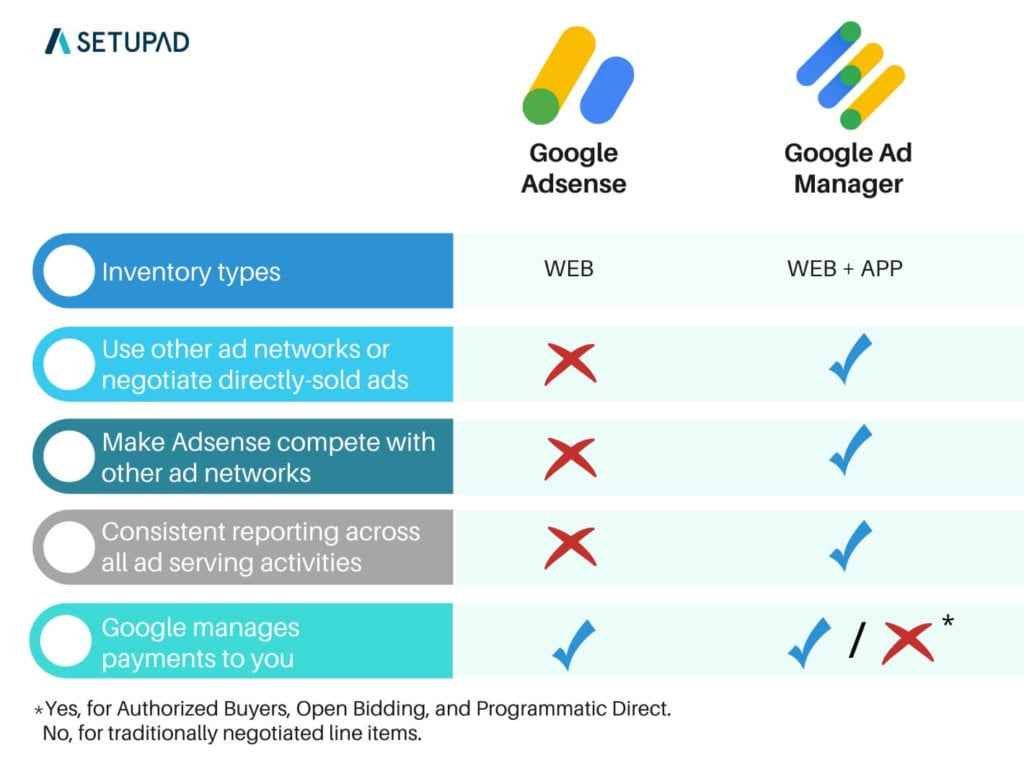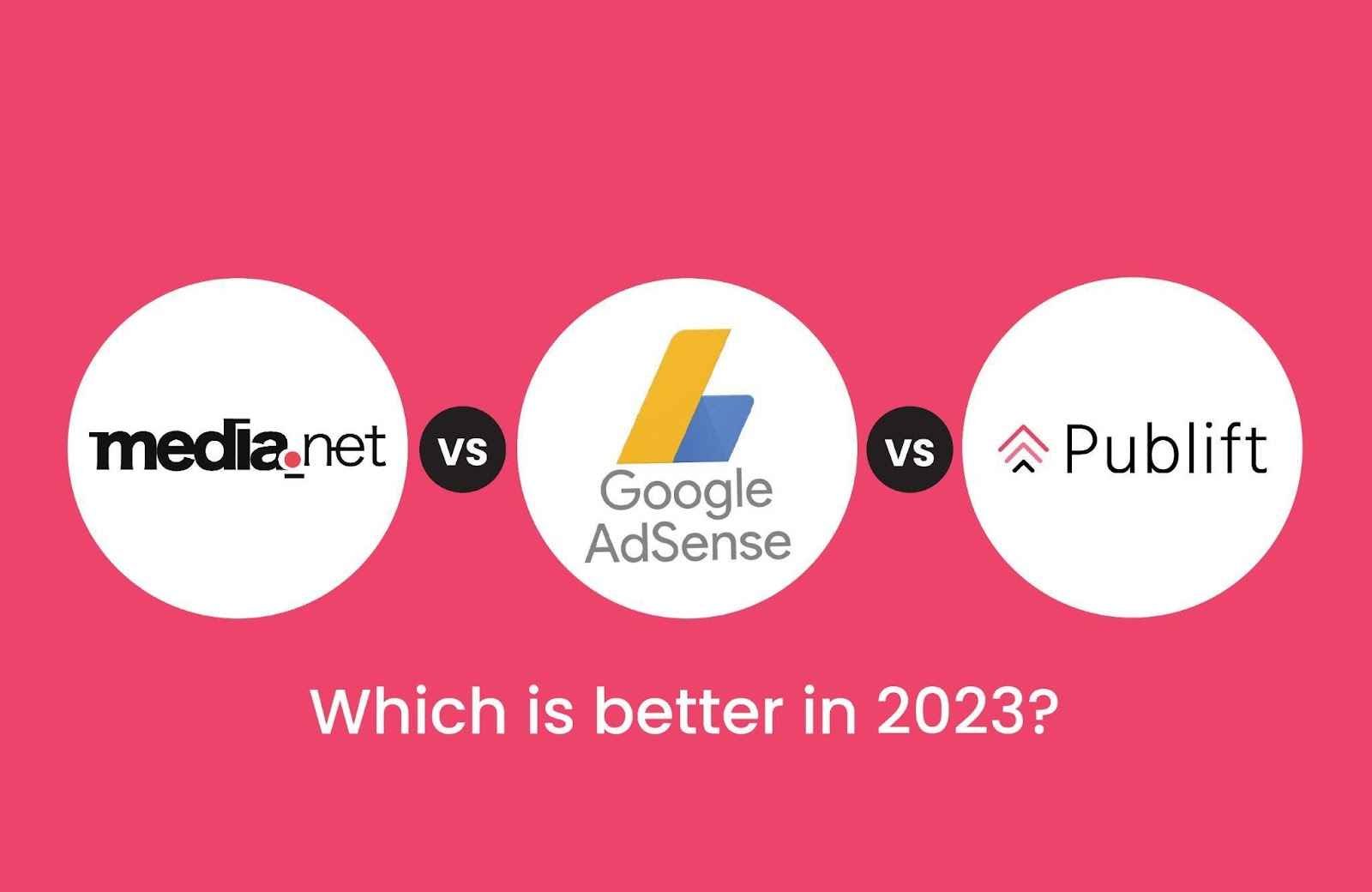In today’s world, digital marketing has become an essential part of any business strategy. As the online world evolves, companies are looking for the most effective ways to connect with potential customers and achieve their marketing objectives. In this light, two of the most popular online advertising approaches are Adsense and Display Advertising. Both offer different benefits and possibilities but which one is more effective? As an expert in the field of digital marketing, I will provide an in-depth comparison of Adsense vs. Display Advertising to help you understand the pros and cons of each approach, so you can choose the best one for your campaign. Let’s dive in!
Comparison Table: Adsense vs. Display Advertising
| Features | Adsense | Display Advertising |
|---|---|---|
Purpose | Contextual advertising program designed for publishers | Visual ads displayed on websites, social media, and apps |
Cost Model | PPC (Pay-Per-Click) | CPM (Cost-Per-Mille) or CPC (Cost-Per-Click) |
Targeting Options | Keyword, topic, placement, demographic, interest, and remarketing | Geographic, demographic, contextual, behavioral, and retargeting |
Ad Formats | Text, display, link units, matched content, and in-feed ads | Banner, native, interstitial, video, and rich media ads |
Ad Placement | Automatically placed by Google on publisher’s website | Selected by advertiser or publisher on specific website or app |
Visibility | Visible only on publisher’s website | Visible on multiple websites and platforms |
Performance | Higher click-through rates (CTR) due to contextual relevance | Higher conversion rates due to advanced targeting options |
Ultimately, the effectiveness of Adsense vs. Display Advertising depends on the specific advertising goals and target audience of the campaign. Adsense is more suitable for publishers who want to monetize their website traffic and attract relevant ads, while Display Advertising is better for advertisers who want to reach a specific audience and drive more conversions.

Adsense vs. Display Advertising: Which is More Effective?
Adsense
Adsense is a program offered by Google that allows website owners to display ads on their websites. The program matches the ads displayed on a website with the content of the website.
Pros:
– Easy to set up and use
– Wide variety of advertisers and ad types to choose from
– Revenue sharing program with website owners
Cons:
– Limited control over the ads displayed
– Revenue share can vary widely depending on the website niche and traffic
Key Points:
– Adsense is a popular choice for website owners who want to monetize their websites
– Adsense allows for easy integration of ads on websites without any technical knowledge
– Adsense offers a variety of ad types including text, image, and video ads
Features:
– Revenue sharing program
– Easy integration with websites
– Variety of ad types
According to Google, the average RPM (revenue per thousand impressions) for Adsense is $5-$10.
Display Advertising
Display advertising is a form of online advertising where ads are displayed on websites in various formats including banners, text, and video ads.
Pros:
– Ability to target specific audiences based on demographics, interests, and behaviors
– Variety of ad formats to choose from
– Ability to track performance and make adjustments in real-time
Cons:
– Can be costly depending on the competition for ad placement
– Ad blockers can limit visibility and effectiveness of ads
Key Points:
– Display advertising allows for highly targeted advertising based on audience demographics and interests
– Display advertising can be effective for reaching new audiences and increasing brand awareness
– Display advertising offers a wide range of ad formats to choose from
Features:
– Targeting based on demographics, interests, and behaviors
– Variety of ad formats
– Real-time performance tracking
According to a study by eMarketer, display advertising effectiveness varies widely by industry, with industries such as automotive and computers/electronics seeing higher engagement rates compared to others.
Conclusion:
Both Adsense and display advertising can be effective tools for online advertising, but they serve different purposes. Adsense is more suitable for website owners looking to monetize their website traffic, while display advertising is better suited for businesses looking to reach specific target audiences and increase brand awareness.
While Adsense is easy to set up and use, it offers limited control over the ads displayed and revenue share can vary widely. Display advertising offers more control over targeting and real-time performance tracking, but can be costly depending on competition for ad placement and visibility can be limited by ad blockers.
When considering which product to use, consider your goals and budget, as well as your target audience and competition. Both products can be effective when used properly and with a clear strategy in mind.

Guidelines for Using Adsense vs. Display Advertising: Which is More Effective?
1. Understand the Difference
Adsense is a contextual advertising network that shows ads related to the content on your website. Display advertising, on the other hand, involves banner or video ads that are not necessarily related to your content but may be of interest to your audience. Understanding the difference can help you choose the right advertising strategy for your website.
2. Positioning is Key
Regardless of whether you are using Adsense or display advertising, it is important to position the ads in a way that makes them noticeable without being intrusive. Placing ads above the fold or near the content can increase click-through rates and revenue. Experiment with different positions to find out what works best for your website.
3. Target Your Audience
To maximize the effectiveness of your ads, it is important to target them to your audience. Adsense allows you to target ads based on factors such as location, language, and user behavior. Display advertising can be targeted based on demographics, interests, and online behavior. Use these targeting options to ensure that your ads are relevant to your audience.
How To Determine Which Advertising Type Is More Effective: Adsense vs. Display Advertising
1. How can I determine what type of advertising is more effective for my website?
Answer: The best way to determine which type of advertising is more effective is to A/B test both Adsense and Display Advertising on different pages of your website. Use different ad formats, placements, and colors. Track the click-through rates, conversion rates, and earnings for both types of advertising. Compare the results over a period of time to see which one performs better.
2. How do I get started with Google Adsense?
Answer: To get started with Adsense, you need to sign up for an account on the Google Adsense website. Once your account is approved, you can generate ad codes for different ad formats like display ads, link units, and search boxes. Copy and paste the ad code on your website pages where you want the ads to appear. Adsense uses contextual targeting to display ads relevant to your website content.
3. How do I get started with Display Advertising?
Answer: To get started with Display Advertising, you can sign up for an account on popular ad networks like Google AdWords, Adroll, or Bing Ads. Create an ad campaign with your target audience, ad formats, and budget. Choose the websites or apps where you want the ads to appear. Display Advertising uses demographic and interest targeting to display ads to a specific audience.
4. How can I optimize my Adsense earnings?
Answer: You can optimize your Adsense earnings by experimenting with different ad formats, placements, and colors. Try to blend the ads with your website design, so they don’t look like intrusive ads. Use the Adsense heatmap to find the best ad placements on your website. Focus on creating high-quality content that attracts more traffic and engagement. Use Analytics to track your website performance, user behavior, and revenue.
5. How can I optimize my Display Advertising performance?
Answer: You can optimize your Display Advertising performance by targeting the right audience and using ad formats that grab attention. Use eye-catching images, videos, or GIFs to make your ads stand out. Test different ad creative, headlines, and calls-to-action to see which ones get the most clicks and conversions. Use Analytics to track your ad campaigns’ performance, including impressions, clicks, conversions, and ROI. Keep optimizing your ad campaigns based on what works best.
FAQs for Adsense vs. Display Advertising: Which is More Effective?
1. What is the difference between Adsense and Display Advertising?
Adsense is a program run by Google that allows website owners to serve targeted ads to their audience and earn revenue from clicks or impressions. Display advertising refers to image-based ads that are placed across various websites or ad networks to reach a wider audience.
2. Which is more cost-effective: Adsense or Display Advertising?
It depends on your goals and budget. Adsense is more cost-effective if you want to drive traffic to your website and earn revenue from clicks or impressions. Display advertising can be more expensive upfront, but it can also reach a larger audience and generate more sales or leads in the long run.
3. Can I use both Adsense and Display Advertising at the same time?
Yes, you can use both Adsense and Display Advertising on your website. It’s always good to diversify your revenue streams and experiment with different advertising formats to see what works best for your audience and business goals.
4. Which type of ad format performs better: text-based or image-based?
Again, it depends on your audience and goals. Text-based ads (such as Adsense) tend to perform better for informational searches or when visitors are looking for specific products or services. Image-based ads (such as display advertising) can be more engaging and eye-catching, making them more effective for brand awareness and product promotions.
5. How do I measure the effectiveness of my Adsense and Display Advertising campaigns?
You can measure the effectiveness of your Adsense and Display Advertising campaigns by tracking metrics such as click-through rates (CTR), cost per click (CPC), conversion rates, and return on investment (ROI). Use tools such as Google Analytics or ad platforms’ reporting tools to monitor your campaigns and adjust your strategy as needed.
In conclusion, both Adsense and display advertising have their strengths and weaknesses. Adsense may be more effective for those looking to generate revenue through their website, while display advertising may be better suited for those looking to increase brand awareness and drive traffic to their site. However, it is important to note that success with either method ultimately lies in creating compelling content and targeting the right audience.
Whether you choose to focus on Adsense or display advertising, it is crucial to constantly analyze and adjust your strategy based on performance metrics. Keep testing and refining your tactics to ensure that you are achieving the best possible results.
In the end, it may be best to incorporate both Adsense and display advertising into your digital marketing strategy. Each has its place and can play a crucial role in helping you achieve your business objectives. By combining the two, you can maximize the benefits of each method and create a more well-rounded approach to online advertising.